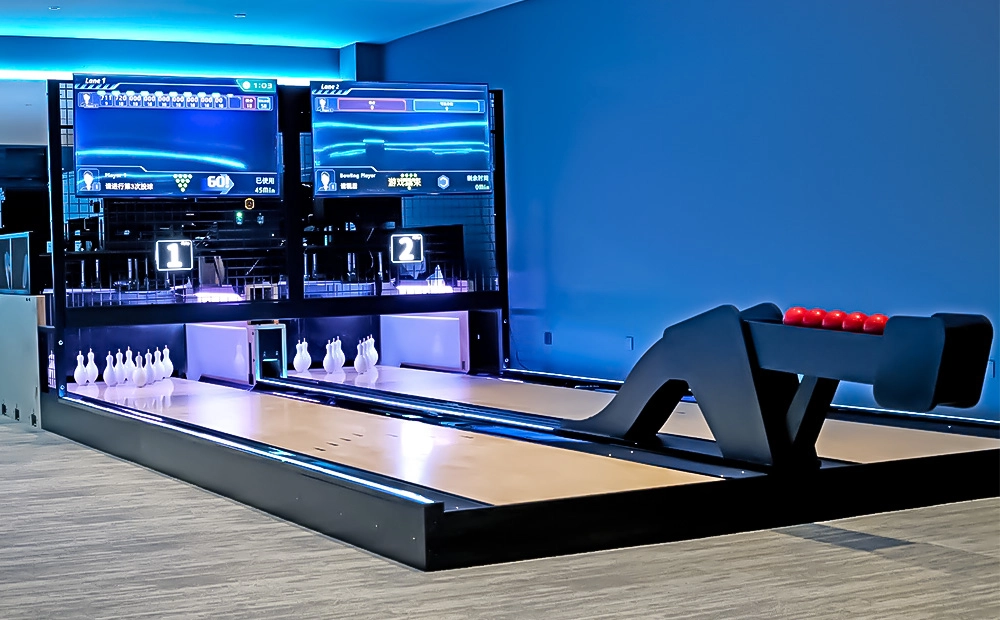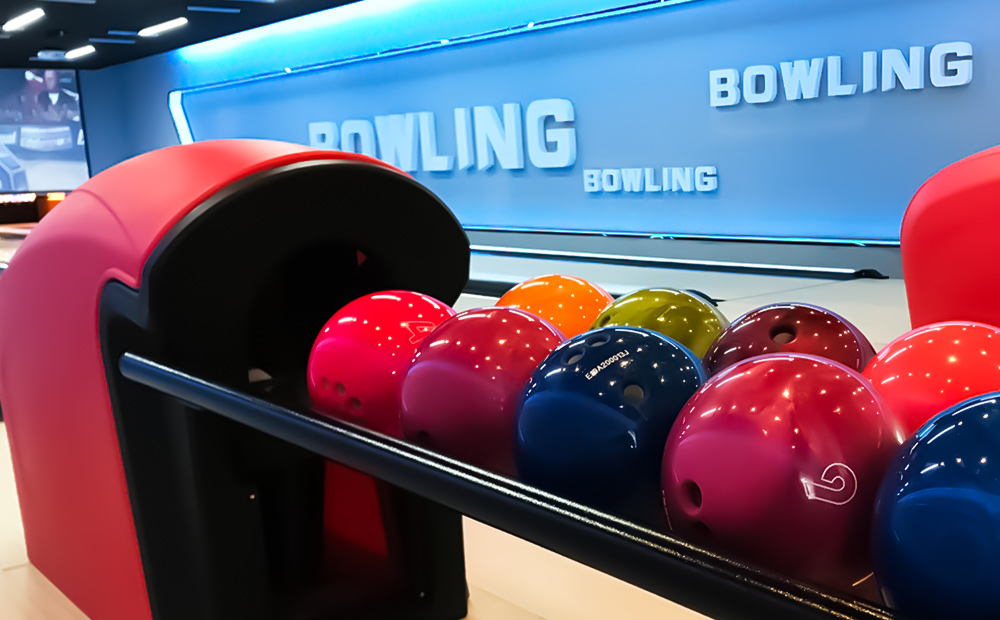The Cost of Building a Bowling Alley: A Complete Guide
- Why Costs Vary So Much
- Cost Breakdown
- 1. Land and Site Acquisition
- 2. Building Construction or Renovation
- 3. Lanes and Installation
- 4. Pinsetter Systems
- 5. Scoring, Displays, and Lighting
- 6. Utilities and Safety
- 7. Permits, Insurance, and Pre-Opening Marketing
- Project Timeline
- Revenue Model and Profitability
- Compliance and Certifications
- FAQs
- Conclusion
- About the Author
The cost of building a bowling alley varies widely depending on its type and size. A private home setup with 1–2 lanes can cost tens of thousands to hundreds of thousands of dollars. A small commercial center with 4–8 lanes may range from several hundred thousand to over one million dollars. A mid-to-large entertainment center with 12+ lanes often requires multi-million-dollar investments. Costs are determined by factors such as location, lane type, pinsetter technology, facility design, and whether you include additional amenities like food & beverage or arcade games.
Why Costs Vary So Much
-
Project type – A private home alley, a community-based bowling lounge, or a full-scale urban entertainment center all have drastically different requirements.
-
Equipment selection – Traditional free-fall pinsetters are more expensive than string pinsetters. Brands like Brunswick or QubicaAMF command premium prices compared to local or custom options.
-
Construction needs – Ceiling height, floor reinforcement, HVAC upgrades, fire safety, and accessibility renovations can add significant costs.
-
Location – Land costs, rent, and transportation affect the budget. Central urban areas are far more expensive than suburban sites.
-
Extra amenities – Food & beverage service, arcade machines, birthday rooms, or party halls are key profit drivers today but require added investment.
Cost Breakdown
Below is a structured breakdown of typical expenses, based on industry sources and Flying Bowling’s experience. Exact figures depend on local quotes and project scope.
1. Land and Site Acquisition
-
Purchase or long-term lease: $500,000 – $2,000,000 (highly location-dependent).
2. Building Construction or Renovation
-
Structural, flooring, HVAC, and safety compliance: $100,000 – $3,000,000+.
3. Lanes and Installation
-
Home/private lane (1–2 lanes): $20,000 – $175,000 per lane.
-
Commercial lane (full installation): $25,000 – $80,000+ per lane.
4. Pinsetter Systems
-
String pinsetter: $8,000 – $12,000 per lane.
-
Free-fall pinsetter (traditional): $15,000 – $25,000 per lane.
-
Premium free-fall systems: $25,000 – $35,000+ per lane.
5. Scoring, Displays, and Lighting
-
Digital scoring systems and projection displays: several thousand to tens of thousands depending on technology.
-
Furniture, ball racks, shoes, and seating: $20,000 – $200,000 depending on scale.
6. Utilities and Safety
-
HVAC, electrical rewiring, sprinkler systems, and accessibility retrofits often add 10%–25% to total project costs.
7. Permits, Insurance, and Pre-Opening Marketing
-
Expect 5%–10% of total costs for licenses, insurance, branding, and staff training.
👉 Example: A 12-lane commercial bowling center may require $1M–$4M+ depending on scope.
Project Timeline
From concept to grand opening, most commercial bowling alleys take 12–18 months. Home projects may finish in just a few months. Delivery lead time for imported or custom equipment is often the bottleneck.
Revenue Model and Profitability
Modern bowling centers make money from more than just lane rentals.
-
Primary revenue: lane rentals, per-game fees, shoe rentals.
-
High-margin revenue: food & beverage, arcade/prize machines, birthday parties, leagues, and corporate events.
-
Food & beverage is increasingly critical, with many centers repositioning themselves as restaurants and entertainment hubs first, bowling centers second.
-
Cash flow planning: build conservative and optimistic scenarios when seeking financing to account for seasonality and customer traffic fluctuations.
Compliance and Certifications
-
USBC Standards (United States Bowling Congress): If you want to host sanctioned leagues or tournaments, lanes and equipment must meet USBC specifications. This includes lane dimensions, markings, and pinsetter tolerances.
-
Local building permits, fire codes, and accessibility standards must also be met before opening.
FAQs
Q: How much does it cost to build a 12-lane bowling center?
A: Industry ranges suggest $1M–$4M+, depending on location, equipment type, and amenities.
Q: What’s the difference between string and free-fall pinsetters?
A: String pinsetters use lightweight strings to reset pins, are cheaper ($8K–$12K per lane), and require less maintenance. Free-fall machines mimic professional tournament play but cost $15K–$35K+ per lane.
Q: How long does construction take?
A: Commercial centers usually take 12–18 months from design to launch, while private lanes may take just a few months.
Conclusion
-
Building a bowling alley is a significant investment, but with the right planning and a clear understanding of costs, it can also be a highly rewarding venture. Whether you’re adding a private lane to your home or developing a large-scale commercial entertainment center, success depends on smart budgeting, choosing reliable equipment, and creating a guest experience that goes beyond bowling.
At Flying Bowling, we specialize in providing turnkey solutions — from lane design and pinsetter selection to installation and after-sales support. Our team has helped clients worldwide build cost-effective, high-quality bowling alleys that deliver both fun and profit.
👉 Ready to start your bowling alley project? Contact Flying Bowling today to get expert advice, detailed quotations, and customized solutions tailored to your needs.
About the Author
jackson – Bowling Facility Consultant with 10+ years of experience in designing and advising on bowling alley projects worldwide. He has consulted on over 20 commercial entertainment centers and multiple home installations. This article is based on publicly available pricing, industry reports, and verified supplier quotes.
Recommended products

Flying Smart Duckpin Bowling

Flying Ultra Standard Bowling String Pinsetter

Brand New String Pinsetter Mini Bowling Equipment Small Ball And Pin

Complete Set Of String Pinsetter Bowling Lane Equipment

Indoor Medium Duckpin Bowling Lane Equipment For Bowling Alley
Bowling Equipment
How much to put a bowling lane in your house?
Building a bowling alley in your house may seem very expensive. But at Flying, you can get top-quality bowling equipment from us at very affordable prices. You can have the fun of bowling at home without requiring a lot of money or effort.
Where to buy bowling equipment near me?
If you want to buy bowling equipment, please contact Guangzhou Flying. We will definitely provide you with the best service.
Where to buy bowling equipment?
If you need bowling equipment, you are welcome to join Flying. We can meet all your needs for bowling equipment. Please believe that we must be the best choice, and our products will definitely satisfy you.
Who buys used bowling equipment?
Usually, many of our Indian customers buy second-hand equipment because the price is relatively low. But in the end, they learned that Flying's prices were extremely competitive and the equipment was brand new and of very high quality. So finally, they chose to cooperate with Flying to purchase bowling equipment.
Price
How much does it cost to put a bowling alley?
The cost of building a bowling alley can vary greatly depending on a number of factors, including:
- Number of lanes: This is obviously a big one. A single lane will cost much less than a whole alley with multiple lanes.
- Location: Building costs are higher in some areas than others. Building in a more populated area will likely be more expensive than a rural area.
- New construction vs. renovation: If you are adding a bowling alley to an existing building, you'll likely save money compared to building a whole new facility.
- Features: Do you want a high-end bowling alley with all the latest technology and amenities? Or are you looking for a more basic setup? The more features you want, the more expensive it will be.
Here's a rough ballpark of what you might expect to pay:
- Home bowling alley: A single lane for your house could cost anywhere from $75,000 to $175,000.
- Small commercial alley: A few lanes in a commercial setting could run from $150,000 to $600,000.
- Large commercial alley: A full-sized bowling alley with many lanes could cost millions of dollars.
If you're serious about opening a bowling alley, it's important to consult with a professional contractor or bowling alley equipment supplier to get a more accurate estimate for your specific project. They can take into account all of the factors mentioned above and give you a more realistic idea of the costs involved.
You may also like

Flying Smart Duckpin Bowling (FSDB) innovative design, standard 9.2-meter short lane, can be shortened in length, compact layout suitable for small spaces. The game rules are simple but challenging, attracting players of different ages to actively participate.
Suitable for social entertainment venues such as bars, billiard halls, and game centers, it not only enhances interactivity but also increases the popularity and consumption frequency of the venue. The fun and competitive nature of FSDB will make it a new focus of social activities.

Flying Classic Standard Bowling (FCSB) is designed according to international competition standards and equipped with an accurate automatic scoring system, providing bowling enthusiasts with a pure professional experience. Whether it is for competitions or leisure entertainment, FCSB can meet high-level needs.
Suitable for family entertainment centers, luxury resorts, private villas, or clubs, it is an ideal choice for customers who pursue high-end quality and professional experience. Its classic design and excellent performance will add lasting appeal to the venue.

Flying Cute Mini Bowling (FCMB) is a mini bowling experience designed for children and families. The lane length is fixed at 12 meters, equipped with lightweight balls without finger holes (only 1.25kg) and small pins, specially designed for children and family fun.
It can not only help children feel the fun of bowling, but also stimulate their interest and competitive consciousness. Suitable for children's playgrounds, theme parks and parent-child centers, it is the best choice for places focusing on the children's market.

Flying Social Medium Bowling (FSMB) is tailored for small venues, with flexible lane lengths (customizable from 9.6 meters to 18 meters), a small ball design suitable for players of all ages, and light pins that are easier to knock down, increasing participation and fun.
Whether it is a gathering of friends or a casual social, FSMB can easily create a relaxed and pleasant atmosphere. Its efficient space-utilization design is particularly suitable for cafes, bars and community entertainment venues, allowing people to fall in love with bowling in a relaxed interaction.
Contact Flying
Start your bowling alley project
If you contact us now for more details, we can provide you with a custom bowling alley service. Our service team will get back to you within 24 hours normally!
© 2025 Flying BOWLING. Designed by gooeyun.
FOLLOW US:




Flying Bowling
Flying Bowling
Flyingbowling
Flyingbowling